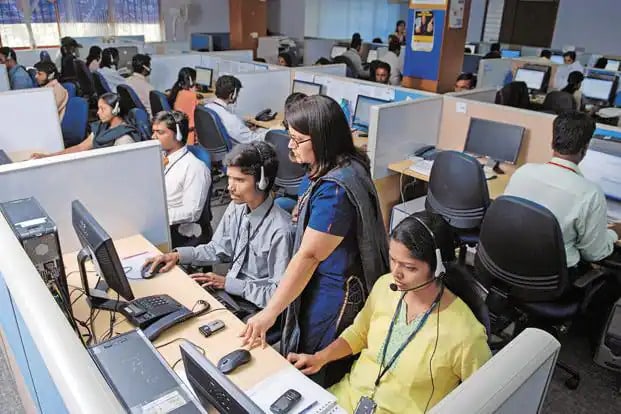What’s in today’s article?
- Why in News?
- Major Takeaways of the Report
- What are the Challenges Associated with Employment in India?
Why in News?
- Recently, a report was published by a non-governmental organization named Lokniti-CSDS.
- Centre for the Study of Developing Societies (CSDS) is a social science research institute, based out of Delhi.
Major Takeaways of the Report
- The report, prepared by Lokniti-CSDS, has been composed based on the survey conducted in 18 states with a sample of around 9,300 respondents.
- The report offers insights into career aspirations, job preferences, and expectations of younger Indians.
- More than one in three (36%) Indians between the ages of 15 and 34 believe unemployment is the biggest problem before the country.
- About one in six (16%) think it is poverty, and 13% think it is inflation.
- Concerns over Jobs –
- The proportion of youth identifying unemployment as the biggest problem has increased by 18 percentage points from the results of a similar survey in 2016.
- The share of those identifying price rise as the primary concern has increased by 7 percentage points.
- It is particularly pronounced among middle-class youth.
- Also, as many as 40% of highly educated respondents (graduate and above) identified unemployment as the most pressing concern.
- In contrast, only 27% of non-literate individuals cited unemployment as their primary concern, likely due to their greater willingness to take on a range of jobs.
- 42% of men said unemployment was the most significant problem; among young women, this number was 31%.
- Occupational Status –
- Almost half of respondents (49%) said they were engaged in some form of work — 40% had full-time jobs; 9% were working part-time.
- Almost a fourth (23%) of youth with jobs were self-employed.
- 16% were professionals such as doctors or engineers,15% were involved in agriculture, and semi-unskilled and skilled workers made up 27% of the total.
- Only 6% were in government jobs.
- Government Job vs Private Job –
- Asked to choose from a government job, a private job, or setting up their own business.
- Three out of five respondents chose government jobs, and more than one out of four opted for own business.
What are the Challenges Associated with Employment in India?
- Employment has remained one of the top challenges for policy planners of India.
- Lack of Sufficient White-Collar Jobs –
- The challenge has become more complex over time with the improvement in literacy and schooling, attainment of higher education and skills and vocational education.
- The educated and trained manpower looks not for jobs alone but for decent jobs with better work environments, regular employment and better remuneration.
- However, job creation for this kind of employment has not kept pace with the increase in the number of job seekers.
- Uneven Growth across the Country –
- The growth of industry and services sector has been very uneven across different regions and states.
- This has resulted in a mismatch in employment opportunities and the supply of labour at local levels.
- Structural Challenges –
- There is a large divergence between structural changes in the output and employment of Indian economy.
- The industry and services sectors, which constitute more than 80 per cent of the gross value added in the country, provide employment to 54.5 per cent of the workforce.
- On the other hand, agriculture, which constituted one fifth of the total economy (GVA) of the country in 2020-21, retains 46.5 per cent workforce.
- This divergence in sectoral share in income and employment is manifested in the large and rising gap in per worker income in the agriculture and non-agriculture sectors.
- Lastly, preference towards government jobs has increased tremendously due to job security, assured salary and other pay and prestige associated with such jobs.
Q1) Which body releases official data on Employment-Unemployment?
The official data on “Employment–Unemployment” is released by the Ministry of Statistical and Programme Implementation (MoSPI) based on Periodic Labour Force Survey (PLFS).
Q2) What do you mean by Labour Force Participation Rate?
The labor force participation rate indicates the percentage of all people of working age who are employed or are actively seeking work.
Source: For India’s 15 to 34-yr-olds, top concern is jobs, economic struggle: What Lokniti-CSDS’s latest survey reveals | NITI.GOV
Last updated on June, 2025
→ UPSC Notification 2025 was released on 22nd January 2025.
→ UPSC Prelims Result 2025 is out now for the CSE held on 25 May 2025.
→ UPSC Prelims Question Paper 2025 and Unofficial Prelims Answer Key 2025 are available now.
→ UPSC Calendar 2026 is released on 15th May, 2025.
→ The UPSC Vacancy 2025 were released 1129, out of which 979 were for UPSC CSE and remaining 150 are for UPSC IFoS.
→ UPSC Mains 2025 will be conducted on 22nd August 2025.
→ UPSC Prelims 2026 will be conducted on 24th May, 2026 & UPSC Mains 2026 will be conducted on 21st August 2026.
→ The UPSC Selection Process is of 3 stages-Prelims, Mains and Interview.
→ UPSC Result 2024 is released with latest UPSC Marksheet 2024. Check Now!
→ UPSC Toppers List 2024 is released now. Shakti Dubey is UPSC AIR 1 2024 Topper.
→ Also check Best IAS Coaching in Delhi
























